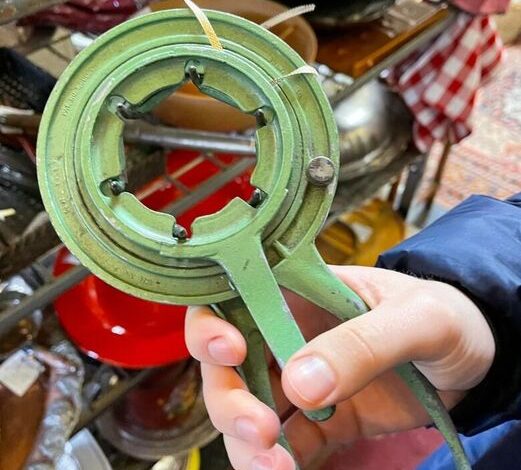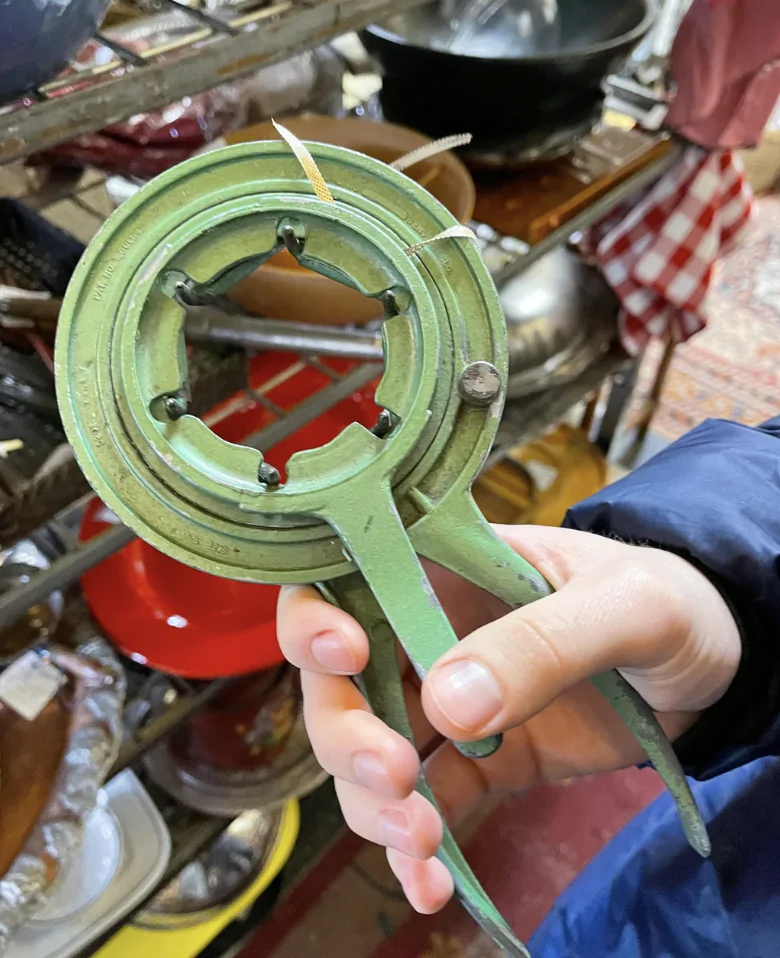Strange Green circular tool with spikes

Castration devices are tools designed for the purpose of removing or rendering the testicles non-functional in animals and, historically, in humans.

These devices have been utilized across various cultures and periods for reasons ranging from livestock management to punishment or as a means of producing certain physical or behavioral characteristics.
In the contemporary context, the use of castration devices is largely confined to veterinary and animal husbandry practices, focusing on the management, control, and welfare of domestic and farm animals.
The primary rationale behind the castration of animals includes controlling breeding, reducing aggressive behavior, managing population sizes, and influencing the physical development of livestock for meat quality.
Castration is a common practice in the management of cattle, sheep, pigs, and horses, among other species. The methods and devices used for castration vary widely, reflecting considerations of animal welfare, the age of the animal, and the practicality of the procedure in different farming or veterinary contexts.
There are several types of castration devices, each designed to suit different species and sizes of animals, as well as the preferences of the handler. These include:
- Burdizzo: A bloodless device that crushes the spermatic cords without breaking the skin. This method, known as emasculation, leads to the atrophy of the testicles. The Burdizzo is favored for its relatively low risk of infection compared to open methods.
- Elastrator: This device stretches a strong rubber band which is then released around the neck of the scrotum, cutting off blood supply to the testicles, which eventually die and are absorbed by the body or fall off. The Elastrator is often used for young animals, as it is considered less stressful and requires no surgical incision.
- Surgical castration: While technically not a device, surgical removal of the testicles using a scalpel is a traditional method that provides immediate results. This method requires proper wound management to prevent infection.
- Emasculatome: Similar to the Burdizzo, an emasculatome crushes the spermatic cords through the scrotal skin, leading to testicular necrosis. It is considered a bloodless method but requires precision to ensure effectiveness.
The use of castration devices and procedures raises important ethical and welfare considerations. Modern veterinary practice emphasizes the need for pain management and the use of anesthesia or analgesics during and after castration to minimize suffering.
The timing of castration and the choice of method are also critical factors in animal welfare, with recommendations varying by species, intended use of the animal, and management practices.
In historical and some cultural contexts, human castration was practiced for various reasons, including as punishment, to produce eunuchs for service in royal courts, or for religious or social reasons. Today, the practice is considered inhumane and unethical when applied to humans without consent for medical reasons.
The development and use of castration devices reflect a balance between practical agricultural needs and the ethical imperative to ensure animal welfare.

As societal attitudes toward animal treatment evolve, so too do the practices and technologies used in animal husbandry, including the ongoing refinement of castration methods to make them as humane and stress-free as possible. The discussion around these devices continues to be part of a larger conversation about the ethical treatment of animals in human care.
